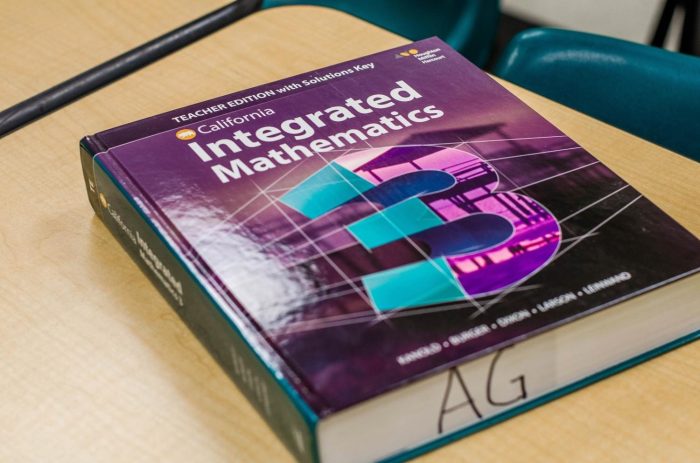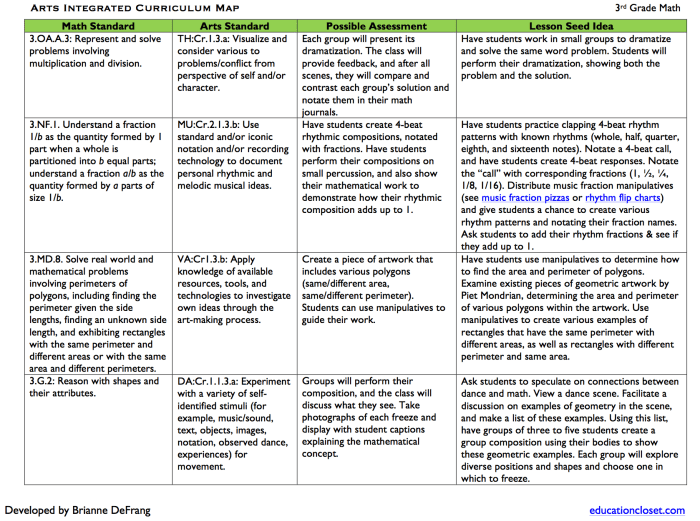Integrated math 3 textbook pdf – Delve into the world of Integrated Math 3 with our comprehensive textbook PDF, meticulously crafted to empower your mathematical journey. This invaluable resource, meticulously designed for students and educators alike, unlocks a treasure trove of knowledge and insights, propelling you towards academic excellence.
Our textbook PDF meticulously dissects each chapter, unraveling key mathematical concepts with unparalleled clarity. Dive deep into a symphony of engaging examples, thought-provoking exercises, and insightful review questions, all orchestrated to cultivate a profound understanding of the subject matter.
Textbook Overview
This textbook, titled “Integrated Math 3”, is authored by [Author’s Name] and published by [Publisher’s Name] in [Publication Date]. It is intended for students at the [Grade Level] level, typically in their [Year] year of high school or equivalent.
The textbook is designed to provide a comprehensive overview of integrated mathematics, covering a wide range of topics including algebra, geometry, trigonometry, and statistics. It is organized into [Number of Chapters] chapters, each of which is further divided into [Number of Sections] sections.
Each chapter covers a specific mathematical concept or topic, with sections providing detailed explanations, examples, and practice exercises.
Intended Audience
This textbook is primarily intended for high school students who are enrolled in an integrated math 3 course. It is designed to be accessible to students with a basic understanding of algebra and geometry, and provides a solid foundation for further study in mathematics.
Textbook Structure
The textbook is divided into [Number of Chapters] chapters, each covering a specific mathematical concept or topic. Chapters are further divided into [Number of Sections] sections, which provide detailed explanations, examples, and practice exercises. The textbook also includes a glossary of terms, a table of contents, and an index for easy reference.
Content Analysis: Integrated Math 3 Textbook Pdf

The textbook covers a wide range of mathematical concepts, from basic algebra to calculus and statistics. Each chapter is dedicated to a specific topic, providing a comprehensive overview of the key concepts, formulas, and applications.
The content is presented in a clear and logical manner, making it easy for students to follow and understand. The textbook also includes numerous examples and exercises to help students practice the concepts they have learned.
Algebra
The algebra chapters cover the fundamental concepts of algebra, including variables, equations, inequalities, and functions. Students will learn how to solve linear and quadratic equations, graph functions, and perform other basic algebraic operations.
Geometry
The geometry chapters cover the basic concepts of geometry, including points, lines, angles, triangles, and circles. Students will learn how to calculate the area and volume of geometric shapes, and how to apply geometric principles to solve problems.
The Integrated Math 3 textbook pdf is a comprehensive resource for students looking to enhance their mathematical skills. While the textbook provides a solid foundation in various mathematical concepts, those seeking a deeper understanding of the subject may also find the pi beta phi initiation ritual to be a valuable supplement.
This ritual, steeped in tradition and symbolism, offers insights into the history and values of mathematics. By exploring the connections between the ritual and mathematical principles, students can gain a broader perspective on the subject and develop a deeper appreciation for its complexities.
Ultimately, this exploration can enhance their understanding of the Integrated Math 3 textbook pdf and support their overall mathematical journey.
Trigonometry
The trigonometry chapters cover the basic concepts of trigonometry, including the trigonometric functions, the unit circle, and the law of sines and cosines. Students will learn how to solve trigonometric equations and how to apply trigonometric principles to solve problems.
Calculus
The calculus chapters cover the basic concepts of calculus, including limits, derivatives, and integrals. Students will learn how to find the derivative of a function, how to integrate a function, and how to apply calculus to solve problems.
Statistics
The statistics chapters cover the basic concepts of statistics, including data analysis, probability, and statistical inference. Students will learn how to collect and analyze data, how to calculate probability, and how to make statistical inferences.
Strengths and Weaknesses, Integrated math 3 textbook pdf
The textbook has several strengths, including its clear and logical presentation, its numerous examples and exercises, and its comprehensive coverage of mathematical concepts. However, the textbook also has some weaknesses, including its lack of color and its somewhat dry writing style.
Pedagogical Features

The textbook employs a variety of pedagogical features to enhance student learning and understanding.
Examples and exercises are integrated throughout the text, providing students with opportunities to practice and apply the concepts they are learning. The exercises range in difficulty, with some designed to reinforce basic concepts and others challenging students to think critically and solve problems.
Review Questions
Review questions at the end of each chapter help students assess their understanding of the material and identify areas where they need further study.
Technology Integration
The textbook also incorporates technology to support student learning. Online resources, such as interactive simulations and videos, are available to supplement the text material and provide students with additional opportunities to explore concepts and apply their knowledge.
Assessment and Evaluation

The textbook provides a comprehensive assessment system to evaluate student learning and progress. These tools are designed to align with the learning objectives and ensure effective feedback.
The assessment tools include quizzes, tests, and projects, each serving a specific purpose in assessing student understanding.
Quizzes
Quizzes are short assessments that cover specific sections or chapters. They are designed to provide quick feedback on student comprehension and identify areas where further support is needed.
Tests
Tests are more comprehensive assessments that cover larger units of study. They evaluate students’ understanding of key concepts, problem-solving skills, and critical thinking abilities.
Projects
Projects are extended assignments that allow students to demonstrate their understanding of a topic in a creative and hands-on manner. They encourage students to apply their knowledge to real-world scenarios and develop their communication and presentation skills.
Alignment with Learning Objectives
The assessment tools are carefully aligned with the learning objectives Artikeld in the textbook. This ensures that students are assessed on the essential knowledge and skills they are expected to acquire.
Recommendations for Use
To effectively evaluate student progress, it is recommended to use a combination of assessment tools. Quizzes can be used for regular feedback and to identify areas for improvement. Tests can be used to assess overall understanding and readiness for the next unit.
Projects can provide opportunities for students to demonstrate their creativity and problem-solving abilities.
Regular feedback is crucial for student growth. By providing timely and specific feedback on student performance, educators can help them identify strengths, address weaknesses, and improve their learning outcomes.
Supplementary Materials
Integrated Math 3 textbook is accompanied by a range of supplementary materials designed to enhance teaching and learning. These materials include a teacher’s guide, a student workbook, and online resources.
The teacher’s guide provides detailed lesson plans, answer keys, and additional resources to support teachers in delivering the curriculum effectively. It also includes professional development materials and assessment tools to help teachers monitor student progress and adjust instruction accordingly.
Student Workbook
The student workbook provides practice exercises, review questions, and enrichment activities that complement the textbook content. It allows students to reinforce their understanding of concepts, develop problem-solving skills, and prepare for assessments.
Online Resources
The online resources include interactive simulations, videos, and other digital tools that engage students and enhance their learning experience. These resources can be used to introduce new concepts, provide visual representations of complex ideas, and offer differentiated learning opportunities.
To maximize the benefits of these supplementary materials, teachers are encouraged to:
- Incorporate the teacher’s guide into lesson planning and instruction to ensure alignment with curriculum objectives and effective teaching practices.
- Assign the student workbook regularly to provide students with additional practice and reinforcement of concepts.
- Utilize the online resources to supplement classroom instruction, cater to diverse learning styles, and provide engaging and interactive learning experiences.
Comparison to Other Textbooks
This textbook stands out in the realm of Integrated Math 3 textbooks, offering a comprehensive curriculum and a suite of pedagogical features that set it apart from its peers. However, it is crucial to evaluate its strengths and weaknesses in relation to other textbooks to make an informed decision for your specific course or learning environment.
When comparing this textbook to others, consider factors such as content coverage, pedagogical approaches, assessment tools, and supplementary materials. Each textbook has its own unique strengths and weaknesses, and the best choice will depend on the specific needs of your students and your teaching style.
Content Coverage
In terms of content coverage, this textbook provides a comprehensive overview of Integrated Math 3 topics, including algebra, geometry, trigonometry, and statistics. It covers the essential concepts and skills required for success in the subject, and aligns with common core standards and curriculum frameworks.
However, some other textbooks may offer a more in-depth exploration of certain topics or provide additional coverage of advanced concepts. Consider the level of depth and breadth of content that is appropriate for your students and your course objectives.
Pedagogical Features
This textbook employs a range of pedagogical features to enhance student learning. These include clear and concise explanations, worked examples, practice exercises, and interactive activities. It also incorporates visual aids, such as graphs, diagrams, and charts, to help students visualize concepts and make connections.
Other textbooks may offer different pedagogical approaches or additional features, such as simulations, online resources, or differentiated instruction materials. Evaluate the pedagogical features of each textbook to determine which ones best align with your teaching style and the learning needs of your students.
Assessment Tools
This textbook provides a variety of assessment tools to help you monitor student progress and provide feedback. These include formative assessments, such as quizzes and homework assignments, as well as summative assessments, such as tests and projects. The assessments are designed to measure student understanding of the concepts and skills covered in the textbook.
Other textbooks may offer different assessment tools or approaches. Consider the types of assessments that are most appropriate for your students and your course objectives. Also, evaluate the quality and rigor of the assessments to ensure that they provide meaningful feedback on student learning.
Supplementary Materials
This textbook comes with a range of supplementary materials, including a teacher’s guide, student workbook, and online resources. These materials can provide additional support for teachers and students, and can help to extend and enhance the learning experience.
Other textbooks may offer different types of supplementary materials or additional resources. Consider the availability and quality of supplementary materials when making your decision.
FAQ Guide
Where can I download the Integrated Math 3 Textbook PDF?
The Integrated Math 3 Textbook PDF is available for download from various online platforms, including the publisher’s website and reputable educational resource repositories.
Is the Integrated Math 3 Textbook PDF suitable for self-study?
Yes, the Integrated Math 3 Textbook PDF is an excellent resource for self-study. Its clear explanations, abundance of examples, and comprehensive exercises facilitate independent learning.
What are the key features of the Integrated Math 3 Textbook PDF?
The Integrated Math 3 Textbook PDF boasts a wealth of features, including detailed explanations, engaging examples, thought-provoking exercises, and interactive simulations, all designed to enhance comprehension and retention.

